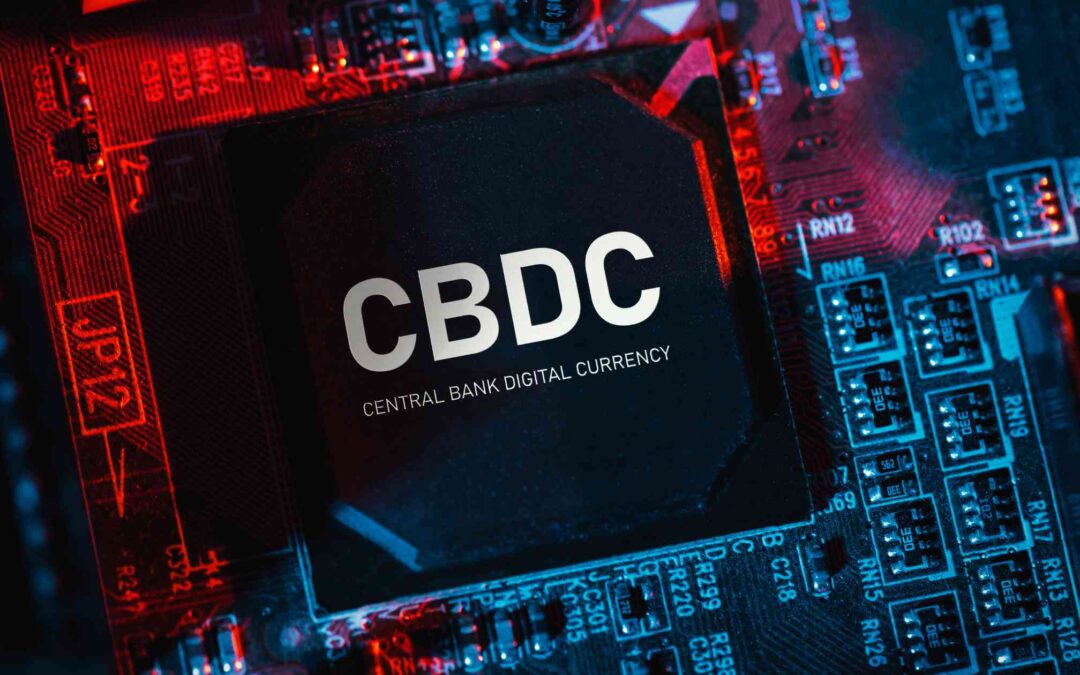
by Iulia Vasile | Feb 18, 2024 | News
The European Central Bank announces a decisive move towards introducing a digital euro. This initiative will enhance privacy, increase competition in the payment sector, and ensure financial stability.
Piero Cipollone, a top official at the European Central Bank (ECB), recently talked to a group of European lawmakers about getting ready to create a digital version of the euro. He mentioned four main challenges they need to tackle and assured that the ECB is working to ensure that everyone can use this new digital currency without having to pay for it.
Cipollone explained that the ECB is already looking for companies that can help build and support this new digital euro. He said it’s important to start looking for these companies now, before they officially decide to introduce the digital euro.
This way, they won’t be behind schedule. He also mentioned that any agreements they make with these companies will be flexible, taking into account future laws and technology changes.
Moreover, he mentioned that only companies based in the EU, or those controlled by EU citizens, will be allowed to be part of this project.
Partners for the digital Euro
This could be a big moment for Amazon because it was picked to help design a sample online shopping feature for the digital euro, but now they are looking for more applicants for the project.
Piero Cipollone also talked about the rules for using the digital euro. He described it as a single set of guidelines and standards that will make sure the digital euro works smoothly everywhere. According to Cipollone, the digital euro should be as straightforward to use as cash.
This would mean people wouldn’t have to rely on big international companies to make payments and everyone in the euro area would get the same level of service.
Cipollone likened the system supporting the digital euro to railway tracks.
Just like tracks can be used by many different train companies but are owned by the government, the digital euro system would be open for various businesses to use while being controlled by the state.
There is no need to make the digital Euro a legal tender
On February 15, a group called the European Money and Financial Forum, which is independent and not-for-profit, released a study. This study pointed out some tricky legal problems that could come up if the digital euro is made a required form of payment.
It was especially concerned about how this decision could affect companies that handle payments and are part of the euro payment system. The study also criticized the idea of making something a required form of payment, calling it an outdated concept.
To make sure the digital euro doesn’t upset the financial system, Piero Cipollone said they’re adding some safety measures to its design. For instance, the digital euro won’t earn interest, so it won’t compete with banks where people save their money.
There will also be limits on how much digital euro individuals can hold, and businesses and financial institutions won’t be allowed to keep it.
However, people will be able to connect their digital euro wallets to their bank accounts. This means they can make transactions directly without needing to move money into their wallets first.
Cipollone also mentioned privacy with the digital euro, promising that it would allow for very private online payments, more private than what’s currently available through commercial services.
Will cash still be in use after the release of the digital Euro?
Cash will still be available, and when you pay with the digital euro without using the internet, it will be just as private as using cash.
Only the person giving the money and the person receiving it will know the details of the transaction.
When paying online, the European Central Bank (ECB) will only get a very small amount of data that’s been disguised to protect identities.
This data is only for necessary actions like completing the payment.
Plus, users will have more control over their personal information than they do with private payment services. The digital euro will also have the best protection against online threats.
ECB’s timeline for the digital Euro
The European Central Bank (ECB) is taking careful steps towards introducing the digital euro, with the project currently in the research and development phase.
In November 2023, the preparation phase was approved to start after the investigation phase was concluded.
While specific dates for the full rollout are yet to be announced, the ECB has indicated a phased approach.
Initial experiments and prototypes are being tested to ensure the digital euro meets high standards of security, efficiency, and accessibility.
Following this, a pilot phase could be launched to test real-life applications, expected to take several years to complete.
The final introduction of the digital euro to the public would only occur after successful trials and adjustments based on feedback.
This cautious approach ensures that once launched, the digital euro will be ready for widespread use across the eurozone, providing a seamless and secure digital payment option for all citizens.
Ultimately, the final decision to introduce the digital Euro can only be taken after the entire EU adopts a legislative framework.

by Iulia Vasile | Oct 13, 2023 | News
Explore the cutting-edge developments in the world of digital currencies, from China’s groundbreaking digital yuan hub to the impending launch of Japan’s DCJPY. Discover how Finland is embracing the digital euro, and witness JPMorgan’s successful cross-border payments pilot with First Abu Dhabi Bank.
China Unveils Shenzhen Hub for Digital Yuan CBDC Innovation
China has launched an industrial park in Shenzhen aimed at fostering the development of the digital yuan ecosystem.
This groundbreaking initiative, reported on Oct. 11 in Chinese media, marks the establishment of the first-ever park dedicated to the central bank digital currency (CBDC), also known as the e-CNY.
Situated in Shenzhen’s Luohu district, adjacent to Hong Kong, the industrial park is commencing its operations with nine initial residents.
Reports indicate that the district government has introduced ten strategic initiatives to accelerate the growth of the digital yuan ecosystem. These initiatives encompass the advancement of payment solutions, smart contracts, hard wallets, and the promotion of the digital yuan.
In an effort to incentivise new residents, the government is offering compelling benefits, including up to three years of rent-free accommodation.
Commercial banks that choose to establish a presence in the park can receive incentives of up to 20 million yuan ($2.7 million), while startups may be eligible for support of up to 50 million yuan ($6.9 million).
The total government support allocated for this endeavour amounts to 100 million yuan ($13.7 million). Additionally, favourable loan terms are being extended to participants.
Notably, among the inaugural residents of the park are prominent entities such as Hengbao, Wuhan Tianyu Information, and Lakala Payment. Hengbao and Tianyu are engaged in the production of payment cards, among other endeavours, while Lakala Payment operates as a payment processor and collaborates with Visa.
China has implemented numerous strategies to stimulate the adoption of the digital yuan, which is currently in the pilot phase.
This initiative spans 26 cities participating in the pilot program, and the central bank digital currency (CBDC) is already accepted by 5.6 million merchants—a number that is expected to steadily increase, thanks to government support and technological advancements.
Notably, the digital yuan app recently introduced a feature allowing tourists to link their Visa and Mastercard accounts, further enhancing its accessibility. Despite these efforts, the adoption rate is still perceived as sluggish, with 261 million digital yuan wallets created as of 2022.
Japan to launch its digital currency in 2024
In a significant development, the DCJPY, a digital currency backed by the Japanese yen, is set to launch in July 2024. This ambitious project is spearheaded by DeCurret Holdings, a digital currency and electronic payments firm, as detailed in their white paper released on October 12.
The DCJPY Network, outlined in the white paper, will comprise two key zones: the Financial Zone and the Business Zone.
The former will facilitate banks in minting digital currency deposits on the blockchain, while the latter will be dedicated to conducting transactions.
Additionally, the Business Zone will serve as a platform for the issuance of nonfungible tokens, security tokens, and governance tokens.
Aozora Bank, a commercial institution with 19 branches in Japan, is poised to become the principal issuer of DCJPY.
The digital currency will be fully backed by Japanese yen deposits.
In 2021, DeCurret reported the formation of a consortium consisting of 70 Japanese companies that will participate in the DCJPY Network. While the white paper doesn’t disclose specific participant names, DeCurret boasts the support of 35 shareholding companies, including prominent names such as Japan Post Bank, Mitsubishi, and Dentsu Group.
In related news, the Bank of Japan, in May 2023, disclosed the results of the second phase of its central bank digital currency experiment and is on track to make a final decision on issuing a “digital yen” by 2026.
Simultaneously, Binance and Mitsubishi UFJ Trust and Banking Corporation are actively exploring the issuance of Japanese yen and other foreign currency-denominated stablecoins within the country.
First Abu Dhabi Bank Successfully Concludes Cross-Border Payments Testing on JPMorgan Onyx
In a significant milestone, First Abu Dhabi Bank (FAB) has wrapped up its cross-border payments testing on JPMorgan’s Onyx platform. This achievement follows a similar pilot conducted by Bank ABC in Bahrain.
JPMorgan, known for its cutting-edge blockchain solutions, has also introduced its Tokenization Collateral Network on the Onyx platform.
The blockchain-based cross-border payments pilot project between JPMorgan’s Onyx Coin Systems and FAB was executed seamlessly, with response times meeting expectations, according to an official statement.
Notably, the FAB pilot concluded shortly after a successful test in Bahrain, where Bank ABC trialed the Onyx system and subsequently initiated a limited launch of services.
JPMorgan’s permissioned distributed ledger, launched in 2020, has been gaining substantial traction in recent months. Tyrone Lobban, the Head of JPMorgan Onyx Digital Assets and Blockchain, disclosed that the platform currently processes a daily volume ranging from $1 billion to $2 billion.
Moreover, Onyx has expanded its reach beyond the Middle East, serving as a platform for euro-denominated payments in Europe since June.
During the same period, it also facilitated interbank United States dollar settlements in India through collaboration with a consortium of six banks.
On October 11, JPMorgan’s groundbreaking Tokenization Collateral Network, operating on the Onyx blockchain, recorded its first public trade.
In this instance, money market fund shares were tokenised and securely deposited at Barclays Bank to support a derivatives exchange between JPMorgan and BlackRock.
The finance industry has witnessed increased interest in tokenisation, with Mastercard testing its Multi Token Network in June and Citigroup introducing Citi Token Services in September.
This collaborative effort, concluded in June, was initiated by the Monetary Authority of Singapore and the Bank for International Settlements. It focused on creating a liquidity pool of tokenised bonds and deposits for lending and borrowing purposes.
Finland Forges Ahead with Instant Payments and Digital Euro Initiatives
The Bank of Finland (BOF) is taking active steps to foster innovative payment solutions.
BOF, under the guidance of Tuomas Välimäki, a BOF board member and a member of the Governing Council of the European Central Bank (ECB), has announced its role in coordinating the development of a Finnish instant payment system aligned with European standards.
Välimäki emphasized the significance of the digital euro, referring to it as the most prominent project within the European payment sector. He highlighted the potential of a digital euro, stating, “The possible introduction of a digital euro would give consumers the option of paying with central bank money wherever electronic payment is accepted.”
The Bank of Finland, in collaboration with the European Payments Council, is actively engaged in crafting this Finnish instant payment solution.
It’s worth noting that this solution will be based on credit transfers, eliminating the reliance on traditional payment card infrastructure.
In February 2023, a Finnish company named Membrane Finance took a significant step by launching a fully reserved stablecoin backed by the euro, known as EUROe.
Membrane Finance CEO Juha Viitala expressed optimism about EUROe’s potential to encourage more Europeans to explore decentralised finance (DeFi) applications and enhance their financial well-being.
On October 18, the governing council of the European Central Bank (ECB) initiated the “preparation phase” for the digital euro project, a two-year period aimed at finalising regulations for the digital currency and selecting potential issuers.
Finland’s proactive stance in embracing instant payments and exploring the digital euro reflects the country’s commitment to staying at the forefront of modern payment solutions.

by Iulia Vasile | Aug 1, 2023 | Bitcoin, Blockchain, Cryptocurrency, News
NYU law professors Richard Epstein and Max Raskin published a paper to explain the potential hazards of central bank digital currencies, highlighting the risk of overstepping governmental boundaries and the importance of maintaining the ‘separation of money and state’.
Central banks worldwide are swiftly progressing with their explorations in creating digital currencies.
Numerous examples, such as the recent announcement of a successful prototype by the New York Federal Reserve or the Bank of England’s achievement in the subsequent phase of its digital pound trial, indicate that over 130 nations globally are considering the idea of central bank digital currencies (CBDCs).
The reasoning behind this is twofold.
Firstly, central banks can position themselves as protectors of consumers and innovators in cost-saving technologies by eliminating the role of private banking intermediaries.
Secondly, they can acquire an additional mechanism for policymaking.
However, the proposition of excluding these intermediaries raises an important question of who would be responsible for the other end of the financial transactions.
The inevitable answer is a far-reaching and intrusive government capable of monitoring every single expenditure.
Digital cash?
Max Raskin, an adjunct professor of law at New York University and a fellow at the school’s Institute for Judicial Administration, and Richard Epstein, a law professor at New York University, a senior fellow at the Hoover Institution, and a senior lecturer at the University of Chicago, are exploring this topic in a paper called “A Wall of Separation Between Money and State: Policy and Philosophy for the Era of Cryptocurrency,“ published in The Brown Journal of World Affairs.
Their argument suggests that a central bank, for instance, the Bank of England, would issue a “digital pound,” which would be a direct claim on the central bank, much like current cash is.
This process would involve creating the necessary infrastructure for individuals to store digital pounds in digital wallets and facilitate interactions with retailers and other users.
Contrasting current practices where central banks such as the Federal Reserve and the Bank of England do not offer accounts to direct depositors, the proposed model would eliminate the costly private banking system that presently stands between the central bank and the accounts held by businesses and individuals.
At a glance, it seems that CBDCs might cut unnecessary costs.
However, these apparent efficiency benefits can be deceptive and hazardous.
Intermediaries function in thousands of markets, with representatives, aggregators, and monitors in almost every significant business line. These participants can’t be easily deemed obsolete.
Intermediaries often provide value as they are motivated to offer more than the bare minimum to stand out – such as new banking products and services.
The variety of services banks can offer due to competitive pressures that ultimately benefit consumers. Restricting these forces can hamper the market economy.
CBDC implementation can be risky
The implementation of CBDCs is not without risks.
The idea of providing extensive power and confidential information to a faceless government entity can be alarming. The system can use that data against you in numerous ways.
By removing the private banking intermediaries, CBDCs would eliminate a crucial barrier that currently safeguards individuals and firms from government intrusion and overstepping.
The use of cash and bearer instruments is currently untraceable by the central government.
However, the use of digital cash would be.
It’s clear that even those who decide to stick with private bankers will still be scrutinised by the state, which holds control over all transactions.
Moreover, these digital funds would empower central banks to direct personal loans and mortgages to specific private parties with minor competition, raising concerns around state industrial policies. It’s not hard to imagine potential nightmare scenarios, yet they are difficult to avert.
The question remains: can we trust thousands of new banker-bureaucrats to perform any better?
Can we trust banks?
The Bank of England, in its digital pound argument, emphasised the British government’s commitment to fighting climate change, stating that the digital pound would be designed with this objective in mind.
Why should a topic as intricate and contentious as climate change be regulated through the financial system?
Similarly, U.S. financial regulators have started to wade into political issues like climate change.
If such explicit political objectives are considered, it is not a stretch to imagine a government-run bank using its powers to favour certain energy producers and punish others through their bank accounts.
The power to impact credits and debits must be a feature of the central banks’ proposed code, which introduces a covert system of industrial policy.
If CBDCs become a reality, officially favoured energy sources like solar and wind power could witness their bank accounts receiving subsidies without the need to attract private investors or undergo the scrutiny of the private banking system.
Bank accounts could become vulnerable to political manipulations, bureaucracies, or even disenfranchisement overnight with limited recourse.
Furthermore, these CBDC initiatives in the U.S. were originally proposed in the context of directly providing pandemic stimulus to the economy. However, the evidence is overwhelming that this hasty system of government payments was incredibly wasteful.
Moreover, central banks could implement countercyclical monetary policies, such as providing cash boosts to individuals in specific regions or sectors, which again becomes a political football.
Money and new technologies
We should undoubtedly strive to leverage new technologies, but only when implemented correctly. According to the paper in the Brown Journal of World Affairs, “Money should be a neutral unit of measurement, like inches or kilograms.”
This concept, referred to as the “separation of money and state,” aims to stabilise all currencies over time, minimising the need for private parties to design complex and costly mechanisms like adjustable-rate mortgages to handle financial instability.
For instance, Bitcoin has a predetermined supply of no more than 21 million units, not governed by any individual institution but rather by the network’s consensus mechanism.
This feature provides a robust defence against value dilution that no government-centric system could hope to match.
This fixed system could offer additional institutional support for developing countries seeking modernisation.
Countries with a history of mismanaging their monetary systems could benefit from the discipline that comes with certain forms of digital currency.
For instance, a central bank like Zimbabwe‘s or Argentina’s, plagued with mismanagement, could adopt an innovative form of dollarisation using Bitcoin or another form of programmed cryptocurrency.

by Iulia Vasile | Feb 28, 2023 | News
Ajay Kumar Choudhary, the executive director of the Reserve Bank of India (RBI), has revealed that the recently launched digital rupee, India’s in-house central bank digital currency (CBDC), is undergoing offline functionality testing.
Apart from evaluating its offline capability, the Reserve Bank of India (RBI) is assessing the potential of CBDCs for cross-border transactions and their integration with legacy systems of other nations.
The wholesale segment pilot was launched by the RBI on November 1, 2022, with 50,000 users and 5,000 merchants onboarded for real-world testing. As of the end of February 2023, around $134 million and 800,000 transactions have been completed via wholesale CBDCs.
In addition to offline functionality, the RBI is also exploring the CBDC’s potential for cross-border transactions and its linkage with the legacy systems of other countries. Choudhary stated that the RBI is eagerly anticipating the participation of private sectors and fintechs in CBDC, especially on offline and cross-border transactions.
Furthermore, the banks’ executive stated that the CBDC would soon become the medium of exchange. That’s why it needs all features of physical currency, including its anonymity.
The launch of CBDC is India’s motivation for improving regional financial inclusion and leading the digital economy. CBDC would also eventually replace cryptocurrencies, as per Choudhary’s statement on behalf of the RBI.
India’s CBDC for remittances
India’s national payment network, the Unified Payments Interface (UPI), has expanded its services to Singapore as of February 21, 2023.
The integration of UPI with PayNow enables citizens of both countries to transfer funds across borders with great speed.
The facility was launched by Shaktikanta Das, Governor of the Reserve Bank of India, and Ravi Menon, Managing Director of the Monetary Authority of Singapore, through token transactions using the UPI-PayNow linkage.
This integration of UPI with PayNow will allow users from India and Singapore to transfer money across borders with great speed. Users can send or receive money from India using only a UPI-id, cellphone number, or virtual payment address for money held in bank accounts or e-wallets. UPI’s instant real-time payment system allows for immediate cash transfer between the two bank accounts via a mobile interface.
Initially, four major Indian banks, namely State Bank of India, Indian Overseas Bank, Indian Bank, and ICICI Bank, will support outgoing remittances. Incoming remittances will be facilitated by Axis Bank and DBS Bank India. Users in the region will have access to the service through Singapore’s DBS Bank and Liquid Group.
ICICI Bank is one of the participants in India’s central bank digital currency (CBDC) program.
According to Sathvik Vishwanath, CEO of Indian crypto exchange Unocoin, this integration of UPI with PayNow is a valuable addition to India’s payment rails. As close to 30% of Singapore’s population consists of expatriates, and they send money to India once a month or quarter, this integration eliminates friction, reducing the processing time and costs.
While India’s digital payment infrastructure has expanded significantly over the last few years due to COVID-19, the government remains skeptical about cryptocurrencies. The government imposed a 30% tax on crypto gains, forcing major players to relocate from the country. However, the government is eager to utilize blockchain technology for its CBDC program and intends to use existing infrastructure to scale the CBDC program.
But India is in no hurry to push out CBDC
Despite joining the CBDC race a few months ago, the Indian government is in no hurry to rush its central bank digital currency (CBDC) pilot. As per a report by The Economic Times on Feb. 8, India’s digital rupee pilot, launched by the Reserve Bank of India (RBI), has attracted 50,000 users and 5,000 merchants.
At a press conference, RBI Deputy Governor Rabi Sankar announced the first public milestones of India’s digital currency and emphasized the government’s plan to proceed with CBDC testing in the smoothest way possible. Sankar stated that the RBI doesn’t want to push CBDC developments without having a full understanding of its potential impact.
Furthermore, Sankar noted that the RBI has set targets in terms of users and merchants and plans to go slowly with the CBDC testing. He stated that they want the process to happen gradually and slowly and that they are in no hurry to make something happen so quickly.
The latest announcement is in line with data from an official digital rupee application, which indicates that the pilot has reached its capacity for users. As per the data from the digital rupee app by the ICICI Bank, India’s CBDC program is full at present, suggesting that more users will be able to join the trial at a later date.
India’s CBDC development came after countries like China aggressively rolled out digital currency in April 2020. However, despite significant efforts to promote the use of CBDCs, some former central bank officials claimed that the digital yuan’s usage has been low.

by Iulia Vasile | Dec 30, 2022 | News
The Turkish central bank is interested in adopting the CBDC technology. It has recently completed its first payments using digital currency. It will continue to test this technology in 2023.
The first trial of the digital currency of the Central Bank of the Republic of Turkey was completed using the Digital Turkish Lira. They have indicated plans to continue testing through 2023.
According to a press release by the Turkish central bank issued on December 29, 2022, the first payment transaction using the digital lira was successful.
It stated that it would continue to conduct closed-circuit pilot tests with technology stakeholders in 2023’s first quarter. The program will later expand to include select banks and financial technology companies throughout the year.
The Turkish central bank stated that the results of these tests would be made available to the public via a comprehensive evaluation report. Next, it will reveal more about the next phases of this study, which will increase participation.
This follows the announcement by the Turkish central bank, which was made on September 21, 2022, that it was investigating the benefits of introducing a digital Turkish Lira. The project is called “Central Bank Digital Turkish Lira Research and Development.”
The government did not make any commitment to digitalizing the final currency of the country and stated that it had not made a decision about the issuance of the digital Turkish lira.
The Turkish central bank also stated in its latest statement that it would continue to test distributed ledger technology in payment systems and their integration with an instant payment system.
It will also focus on the legal aspects of the digital Turkish Lira. This includes the economic as well as the legal framework surrounding digital identification. The bank is also revising the technical requirements for the program.
More countries are experimenting with CBDC
Many countries, including the United Kingdom, Kazakhstan, and India, have begun to pilot programs for central bank digital currencies.
The Bank of England (BOE) has allocated nearly $255,000 for the development of a central bank digital currency wallet. This will allow basic functions such as payments and transactions to be executed.
This wallet could be a proof-of-concept that can hold a central bank’s digital currency (CBDC).
The BOE published a request for applications on the United Kingdom government’s Digital Marketplace. This is a place where government agencies can seek work for digital projects.
The proof-of-concept wallet should provide basic functionality. It must be able to show balances, transactions, and notifications. The wallet must also be able to load and unload with a CBDC. It also needs to be able to request peer-to-peer payments via an account ID or QR code. It must also be capable of being used to pay businesses online.
Meanwhile, the central bank of Kazakhstan recommended that an in-house CBDC be introduced as early as 2023 and a gradual implementation over three years. The latest research paper confirmed Kazakhstan’s intention to launch the digital tenge.
Kazakhstan is one of the largest Bitcoin mining countries in the world. After the second phase of the CBDC test was completed, the National Bank of Kazakhstan (NBK), revealed the findings. The primary purpose of conducting research on CBDC was to assess its potential to improve financial inclusion and promote innovation in the payments sector. It also aimed to increase the country’s global competitiveness.
Pilot research was focused on offline payments. It also examined programmability. The report recommended that market participants and infrastructure players be included in different scenarios.
More than 140 proposals have been submitted by the finance sector for a pilot program of central bank digital currency in Australia. The Reserve Bank of Australia (RBA) warns that digital currency could replace the Australian dollar, and people will avoid commercial banks.
The RBA released a speech by Assistant Governor Brad Jones on December 8. This speech was given at a central banking conference that took place from Dec. 8 through Dec. 9. Jones discussed in detail the potential impact of a CBDC on Australia’s economy.
More than 80 financial institutions have proposed use cases in many areas, including e-commerce and government payments. The pilot eAUD team is currently deciding which use cases it will take into the pilot phase. They expect to publish a report about the project in the middle of 2023. Other risks associated with an Australian CBDC could be liquidity problems, and other problems banks might face if the CBDC is chosen as the preferred source for holdings. If people prefer the CBDC, then banks may not have enough capital to lend money to consumers.

by Iulia Vasile | Sep 21, 2022 | News
Bankers in the Caribbean are facing difficult times. Like many other small economies, these 35 countries face dollarization, dependence on foreign trade, and remittances.
De-risking, a common banking practice, is also causing serious problems. It is no surprise that the region is taking more interest than ever in digital currency adoption.
Carmelle Cadet is the founder and CEO at Emtech. She is a native Haitian and has worked with central banks in Ghana and Haiti. Her company is also part of the Digital Dollar Project Technical Sandbox Program, which is exploring aspects of the United States central bank digital currency (CBDC). She believes that establishing a functioning CBDC in the Caribbean is “a difficult task.”
Banks in the Caribbean: The Risks
The Financial Action Task Force (FATF) lists countries under special surveillance for money laundering and other illegal activities. The so-called grey list was only four, but it seems that the entire region is affected. It is important to do extra research when large international banks offer services like settlement to small local banks in these countries, a process known as correspondent relationships.
International banks are more expensive to do business with if they have done additional due diligence. Banks will often cut ties with banks located in gray-listed countries to avoid paying a higher cost. This is known as de-risking. Many Caribbean countries lost half of their correspondent relationships. This has severe consequences for their economies as well as their societies.
On September 14th, the United States House of Representatives Financial Services Committee held a hearing entitled “When Banks Leave: The Effects of De-Risking in the Caribbean and Strategies for Ensuring Financial Access.” The hearings were attended by Mia Amor Mottley, Prime Minister of Barbados, and Keith Rowley, Prime Minister of Trinidad and Tobago.
According to prime minister Mottley, the regional banking services are accessed with difficulty: “We spend weeks, and businesses that come into our region spend weeks and months, just to open a bank account.”
On Sept. 24, Bahamian Prime Minster Philip Davis raised the topic of de-risking before United Nations General Assembly ten days after the Congressional hearings. He asked, “Why are all the countries being targeted small and vulnerable and former colonies of European states?”
The Bahamas is not currently on the gray list.
Are CBDCs the solution?
The Atlantic Council CBDC tracker shows that three CBDCs were launched within the Caribbean region: Bahamas’ Sand Dollar; Jamaica’s JamDex; and the Eastern Caribbean Central Bank DCash. These CBDCs are located in seven of eight member countries.
The council has listed Haiti’s Digital Gourde under development. Cadet stated that Emtech and HaitiPay presented a proof of concept for a CBDC to the Haitian Embassy in Washington, Washington, on May 5.
Cadet was born in Haiti and immigrated to America in her youth. She was an executive at the IBM Blockchain division when the Bahamas requested proposals for the Sand Dollar. In 2019, as Haiti was going through a roadshow to develop its CBDC, Cadet stated, “If the Bahamas can do that, why not Haiti?” Carmelle Cadet quit IBM to start Emtech.
After the Haiti earthquake, the first financial technology companies were established in Haiti. In 2010, technologies that relied on mobile wallets gained the lead. Jean Baden Dubois, governor of the Haitian Central Bank, stated that mobile phone penetration was 60% in 2008 and is likely to rise in 2021.
Emtech proposed that the CBDC would work online, using mobile phone data. Cadet stated that the rollout of a Haitian CBDC would include device distribution through a partnership with a charity organization. She said that emerging economies are known for using telecommunications to support CBDC functions rather than data networks.
Dubois stated that the Haitian Central Bank saw the CBDC as a way to improve policy efficiency and transparency. This would allow the FATF gray-listed country to meet Anti-Money Laundering/Combating the Financing Of Terrorism standards.
Cadet stated that “dollarization undermines central bank mission of stability.” But by using CBDCs to make cross-border payments, the liquidity and visibility of the reserve would be improved.
But not all CBDC emerging markets are the same
Cadet stated that there are many ways in which CBDC designs are different for emerging markets from those for developed markets. As they strive to settle in real-time, developed markets can afford to slow down, while emerging markets have a greater need for CBDCs.
She said that emerging markets have less baggage, which allows fintech to thrive. While commercial banking is easier in developed markets, the CBDC has more legacy systems that can be integrated.
It is unclear, however, how successful CBDCs are in the Caribbean.
The Sand Dollar, which was widely considered to be the first CBDC, launched in 2020. In July 2022, there were 30,000 digital wallets and about 845 merchants who accepted them. It is promoted by the Bahamian government regularly.
DCash was introduced in April 2021 but crashed in January, and it was down for almost two months. A spokesperson for Grenada-based conglomerate Geo. F. Huggins & Co., the first company to accept a DCash payment, said during the outage that the CBDC represented a “minimal” portion of its sales.
Cadet stated that her company was in talks with the Haitian Central Bank “to understand the licensing risk” about a year prior to the proof-of-concept presentation. She has been in contact with the bank ever since. According to her, the company is currently waiting for the central bank to issue a request for proposals for vendors.






